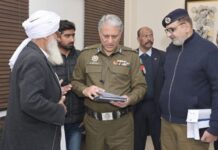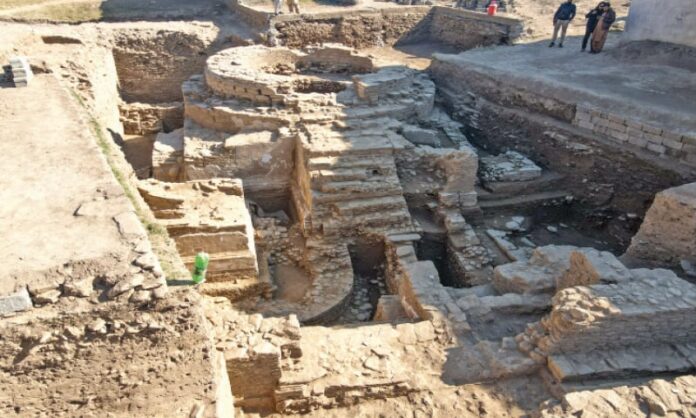LAHORE: About 2,000 years old artifacts of Buddhist were discovered by a team of Punjab University archaeologists, from the old Ravi bed of Jhelum that reflect presence of Buddhism between Sarghoda and Jhang for the first time.
A press conference regarding briefing about first-ever discovery of Buddhist civilization in Central Punjab was held Lahore Press Club on Thursday. PU Vice Chancellor Prof Dr Khalid Mahmood, Dean Faculty of Arts & Humanities Prof Dr Amra Raza, Secretary Tourism Asif Bilal Lodhi, PU Department of Archaeology Chairman Dr Muhammad Hameed and others addressed the press conference.
Prof Mahmood said that according to the prevailing perception for more than a century, Buddhism was limited to Khyber Pakhtunkhwa and Taxila region. He said that a research group under the patronage of Dr Hameed discovered the 2000-year-old Buddhist civilization in Central Punjab.
He said that the discovery of the artifacts confirms that the followers of Buddhism were inhabitants of this area and they established their religious buildings, stupas and monasteries. He said that PU has played a leading role in tracing Buddhism in Central Punjab and researchers were provided resources to explore the region.
Tourism Secretary Mr Asif Bilal Lodhi appreciated the efforts of PU research team and said that the research has provided evidence regarding presence of Buddhist civilization. He extended his full support to launch joint ventures for exploring various tourist and heritage sites. He said that such unique discoveries would contribute to documentation of eminent tourist spots in Punjab.
Dr Hameed said that in the recent field tour, innumerable evidences of ancient settlement in form of cultural mounds were recorded. He said that prior to this discovery, there were unsubstantial evidences of Buddhism in Punjab. He stated that this great achievement of Punjab University researchers has opened a new chapter in the religious and cultural history of the province, which indicates that the followers of Buddhism established their center of worship in Punjab and adopted a unique method for dissemination and preaching of their religion.
He said that these facts remained invisible and unnoticeable to date. He said that after recent discovery, further research and visits of the aforesaid areas are needed to be carried out to find the answers of the several questions including how and from where the Buddhism came into being in central Punjab, what types of stupas of Buddhism were available in the said region, how did they establish their religious buildings and monasteries, what was the duration of Buddhism, what was the school of thought of Buddhism, What were the characteristics of Buddhism, How did Buddhism disappear / displace in the region.
Dr Hameed said that the practical implementation of these follow up works depends upon the support from the government, society, law enforcement agencies in order to complete this task as well as to save our glorious cultural heritage scattered and waiting to be unearthed in the plain of the Punjab province.























